The California Transportation Commission has approved the CEQA environmental review of the 2.2-mile extension of The Portal, San Francisco’s Downtown Rail Extension. The Portal will connect the city’s existing 4th Street Train Station to the Salesforce Transit Center. Once complete, the connection will accommodate Caltrain and future high-speed rail.
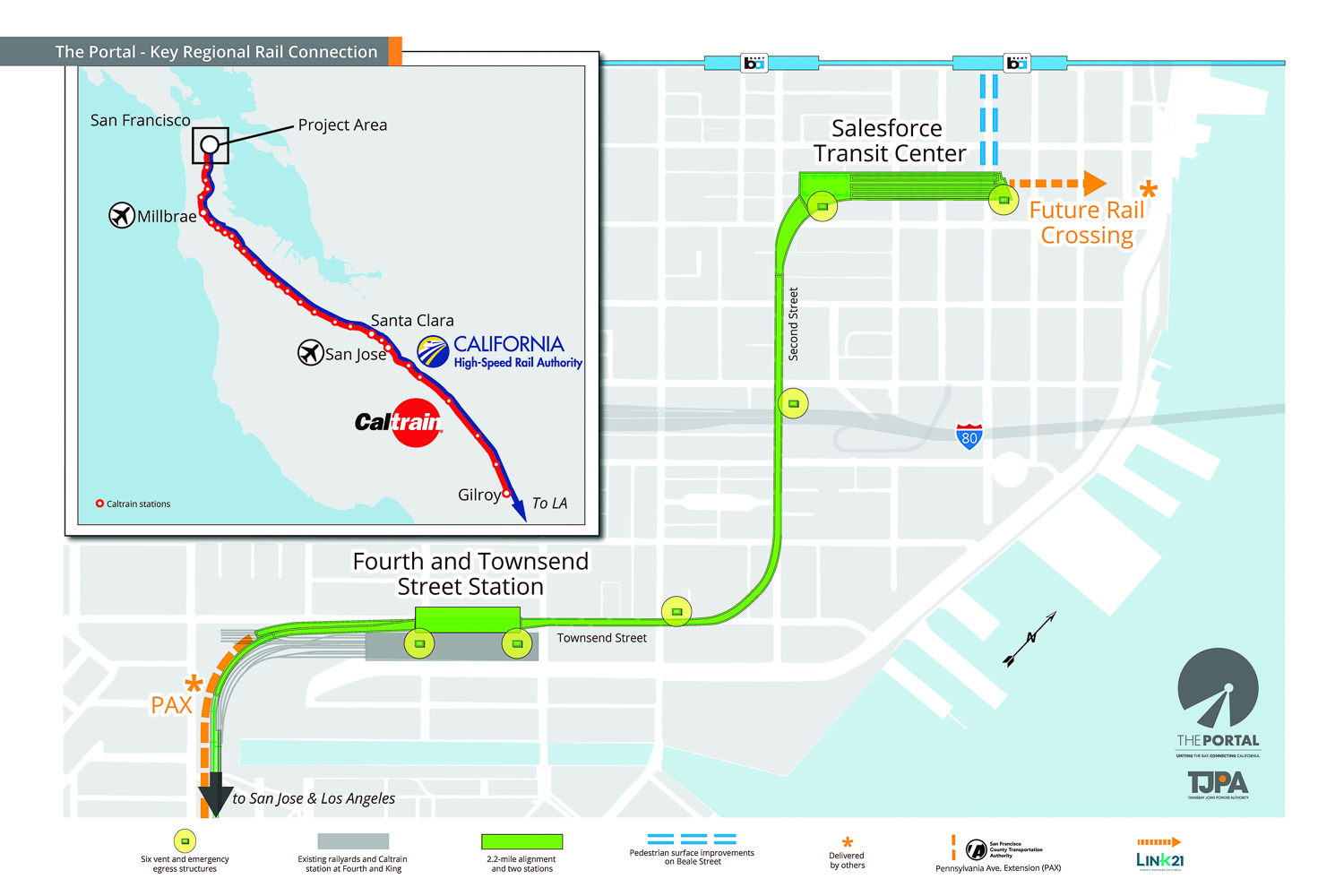
Downtown Portal map, image by TJPA
The notice of determination for the extension has determined that the project will have a significant effect on the environment and that a mitigation measures and reporting plan were adopted to minimize its impact. The report was sent from the California Transportation Commission to the State’s Office of Planning and Research.
The Portal will include a new underground station at Fourth and Townsend. A tunnel will connect with the Transbay Transit Center underground station, which opened in 2018. the Transbay Joint Powers Authority writes that “the already built two-level trainbox will serve as the Lower Concourse, and Train Platform levels when The Portal is complete.”
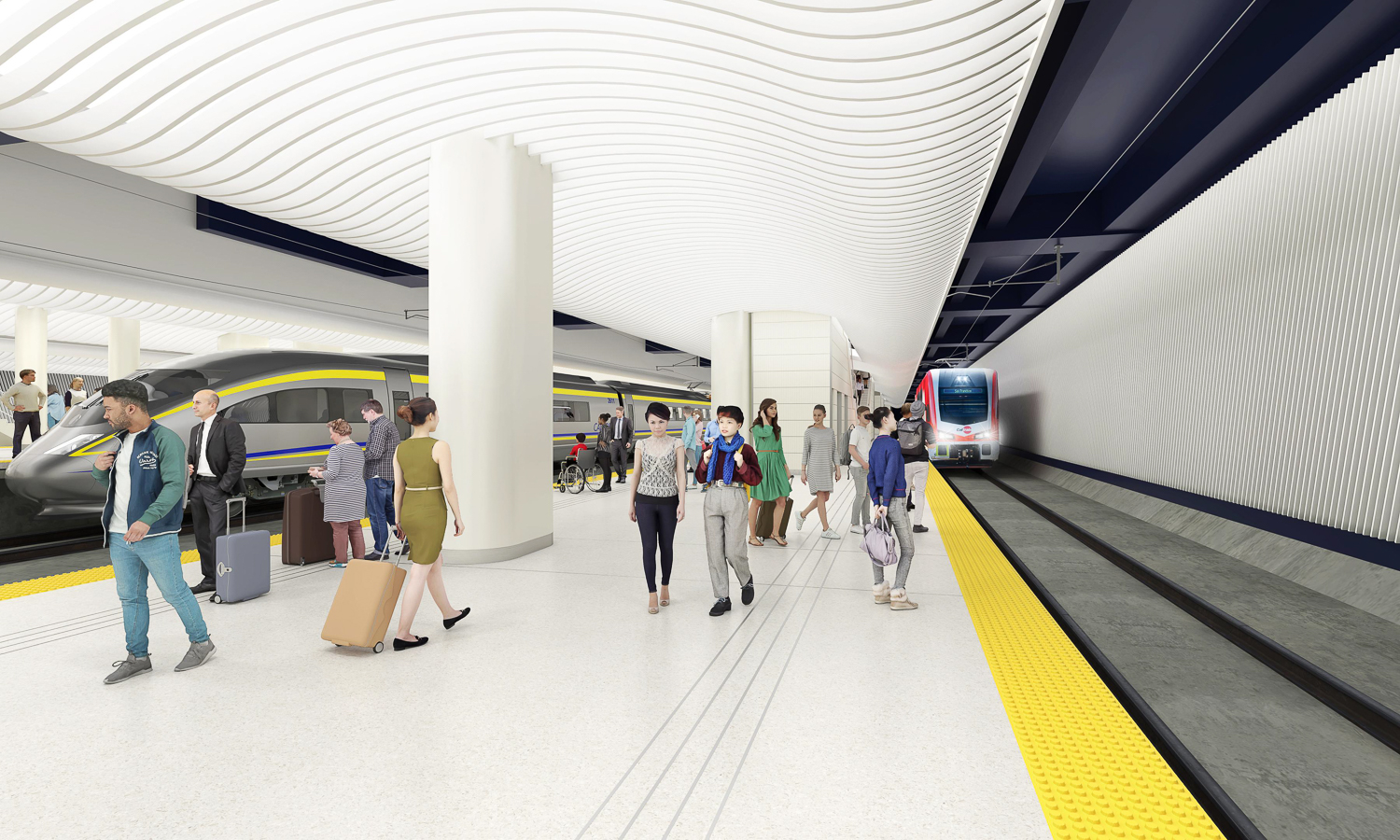
Downtown Portal proposed platform with Caltrain and HSR trains, rendering by TJPA
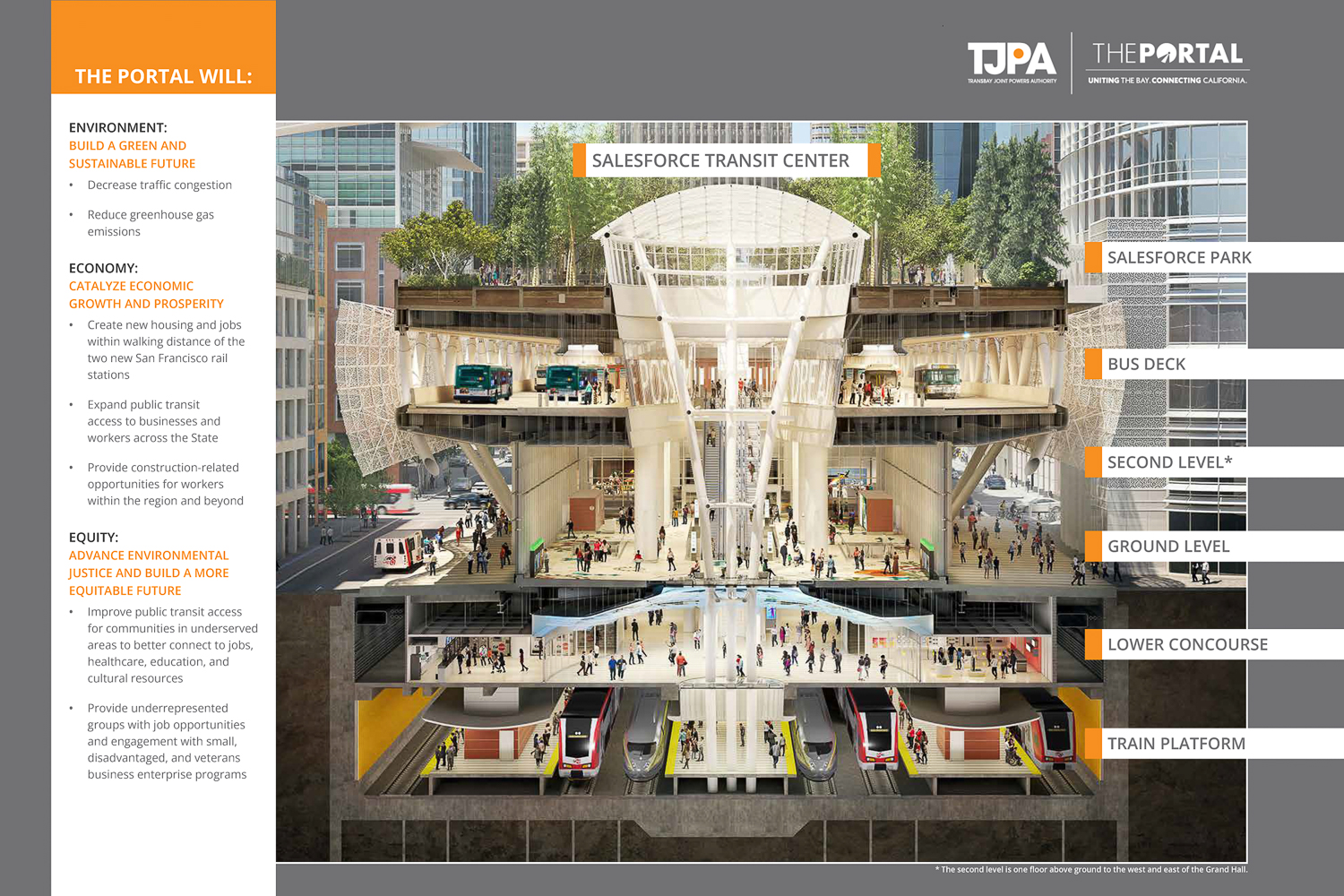
Transbay Transit Center cross-section showing function of each floor, image by TJPA
San Francisco is one of three cities with HSR stops in the Bay Area. HSR, which will transverse around 422 miles from Downtown Los Angeles, will stop at Millbrae’s BART-Caltrain connection hub and San Jose’s Diridon Station.
Earlier this year, the public learned about a newly projected $6.7 billion price tag for the 1.3-mile underground connection from the current station to Downtown. Completion is expected as early as 2032. However, the Bay Area has seen its fair share of infrastructure projects with ballooning price tags, missed deadlines, and reduced scale. Most recently, in Santa Clara County, the six-mile BART extension has seen its initial $4.7 billion expansion that would open in 2026 be slowly pushed back a full decade, now projected to open in 2036 at a cost of roughly $12.2 billion.
Subscribe to YIMBY’s daily e-mail
Follow YIMBYgram for real-time photo updates
Like YIMBY on Facebook
Follow YIMBY’s Twitter for the latest in YIMBYnews

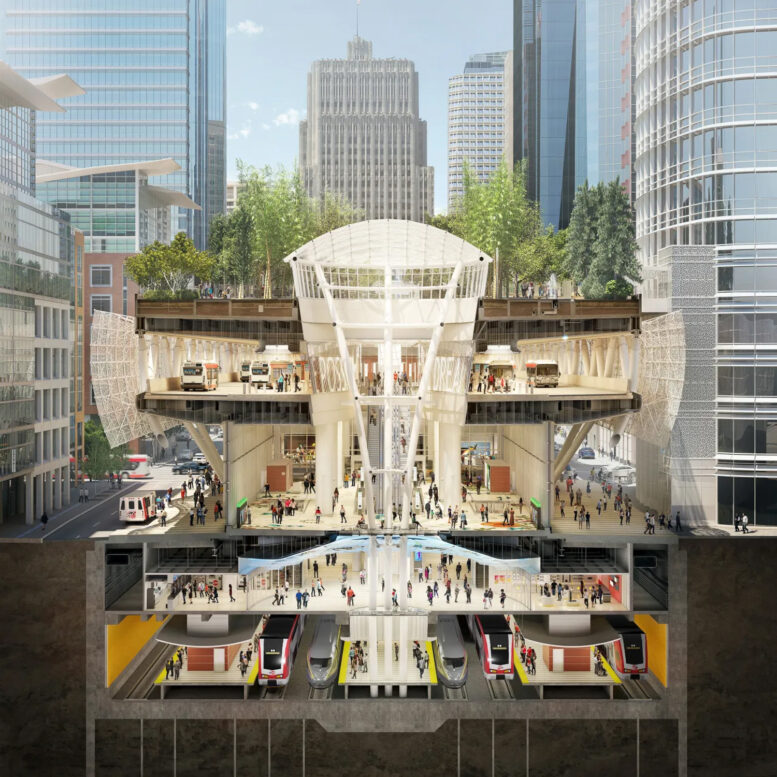

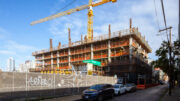
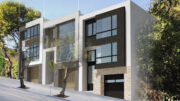
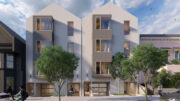
Is it just me or did anyone else think this was already approved? Hmm regardless, good news and let’s hope the political situation in DC doesn’t mess with this one.
Amazing how China has built thousands of miles of high speed rail in and outside of China since 2008. Glad to see the US is still constructing its first line, I hope to see a second line before 2100.
The people who designed and built this line should be permanently barred from civil engineering. It’s not just China, even Japan, Spain, and others can build exponentially faster and cheaper
In China, the build wherever they want. If you own a house our a business in the path of the train, it’s bulldozed. No long study, no consideration for people who are displaced.
In California, an entire development project can be stalled for decades if a rare bird is living near proposed tracks… LOL.
Too bad no one works downtown anymore. And also not really anything because the high speed rail system will never reach SF.
Unbelievable I thought 💭 that this was already approved prior to construction 🏗️ of terminal? I guess matter the train 🚆 will no faster than Caltrain?
Unbelievable I thought 💭 that this was already approved prior to construction 🏗️ of terminal? I guess it doesn’t matter the train 🚆 will be no faster than Caltrain ,hence useless
Glad to see this moving forward. Hopefully it’ll get done quickly.
The standard is reporting this at 8.25B, given how much pushback a 6 mile extension with 4 stations got for BART, I can’t imagine anyone wanting to fund a 1.3 mile extension with 1 extra station for half the price.
They really should have value engineered this down, this will likely not get funded for many years, people can already get to the neighborhood by transferring to Muni on the T and or N lines.
Value engineering gets a bad rap, but something is better than nothing.
By the time this is completed, a full 70% of workers will be working from home permanently.
“Completion is expected as early as 2032.”
“Most recently, in Santa Clara County, the six-mile BART extension has seen its initial $4.7 billion expansion that would open in 2026 be slowly pushed back a full decade, now projected to open in 2036 at a cost of roughly $12.2 billion.”
LOL. Again, by 2030, a much greater percentage of the workforce will be able to work from home. BART usage is already down to 40% of pre-Covid on weekdays, and Caltrain is just 30%. This type of train is decades behind the times.
Hmmm. I was under the impression that the “WFH revolution” was rapidly deflating? Regardless, HSR has nothing to do with WFH and, if marketed appropriately, should bolster tourism and prop up budding medium-sized cities throughout the Central Valley.
Reminder, it took San Francisco 6 years & $350M to paint 1.5miles of Van Ness the color red.
Your statement is false. The vast majority of the expense and work of the project you’re referring to was for undergraduate utility work and not for the bus lanes themselves.
*underground (not undergraduate!)
I’m baffled that an underground project in a fully urban area with no impact on natural areas or wetlands poses a significant environmental impact.
It should be build! This extension has a great potential to bring a new life into downtown. I’d rather spend money on this project than on some nonsesens programs or freeways.
Doesn’t matter what it costs, it needs to get built. One reason why downtown is so empty is because infrastructure like this doesn’t exist.
The tunnel and station should’ve been built first with the funding available. The bus terminal could’ve remained in the temporary area until the train station with fully funded and under construction.
Instead, as it stands, SF spent billions without any transit improvements.